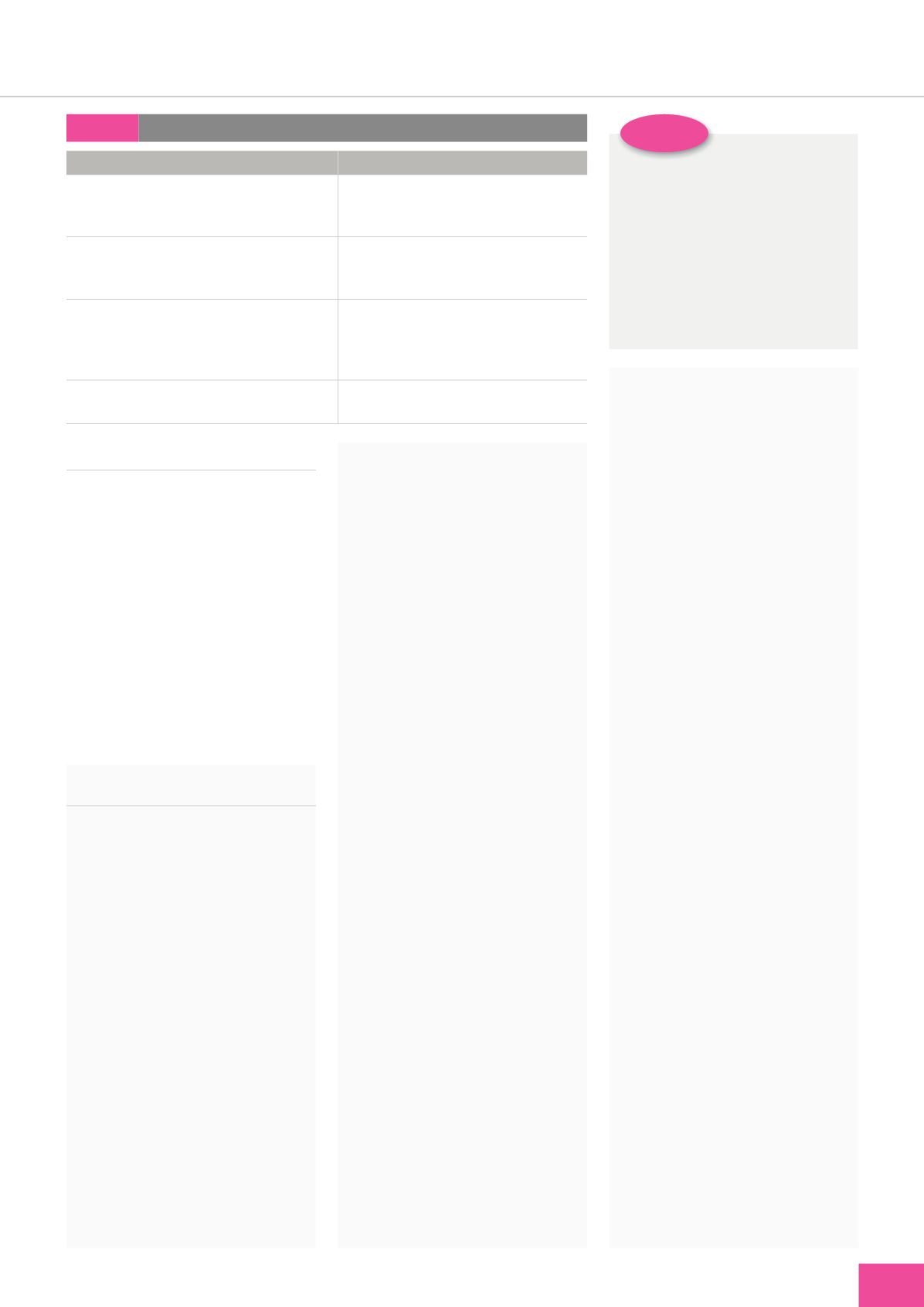
WOUND CARE TODAY
2017,Vol 4, No 1
27
FOCUS ON
I
NFECTION
i
WCT
CONCLUSION
Wound infection can pose
a significant challenge to
healthcare professionals. If treated
inappropriately, it can lead to
increased costs and poor patient
outcomes. Using a structured
systematic approach to wound
assessment can help to ensure that
wound infection is diagnosed and
treated effectively within a timely
manner. Alongside this, robust
documentation will guide clinical
decision-making to provide effective
and efficient wound care.
REFERENCES
Angel D, Lloyd, P Carville K, Santamaria
N (2011) The clinical efficacy of two
semi-quantitative wound-swabbing
techniques in identifying the causative
organisms in infected cutaneous
wounds.
Int Wound J
176–83
Atiyeh B, Costaliola M, Hayek S, Dibo S
(2009) Effect of silver on burn wound
infection control and healing: review
of the literature.
Burns
139–48
Atkin L (2014) Understanding methods
of wound debridement.
Br J Nurs
6XSSO
S10–15
Bjarnsholt T, Kirketerp-Møller K, Jensen
PØ, et al (2008) Why chronic wounds
will not heal: a novel hypothesis,
Wound Repair Regen
2–10
Cutting K, McGuire J (2015) Safe
bioburden management. A clinical
review of DACC technology.
J Wound
Care
S1–30
Department of Health (2010)
Using
the Commissioning for Quality and
Innovation (CQUIN) payment framework
– a summary guide
. DH, London
Dowsett C, Protz K, Drouard M,
Harding KG (2017)
Triangle of Wound
Assessment Made Easy
. Wounds
International. Available online:
www. woundsinternatinal.comDowsett C (2009) Use of TIME to improve
community nurses’wound care
knowledge and practice.
Wounds UK
14–21
Dowsett C, Newton H (2005) Wound bed
preparation: TIME in practice.
Wounds
UK
58–70
European Wound Management
Association (2005) Position document.
Identifying criteria for wound infection
.
MEP Ltd, London
Gottrup F, Apelqvist J, Bjansholt T
et al (2013) EWMA document:
Antimicrobials and non-healing
wounds. Evidence, controversies and
suggestions.
J Wound Care
6XSSO
S1–S92
Guest J, Ayoub N, McIlwraith T, et al
(2015) Health economic burden that
wounds impose on the National Health
Service in the UK.
BMJ Open
. Available
online:
http://bmjopen.bmj.com/content/5/12/e009283
Harding K, Gray D, Timmons J, Hurd
T (2007) Evolution or revolution?
Adapting to complexity in wound
management.
Int Wound J
6XSS
1–12
International Wound Infection Institute
(IWII) (2016)
Wound infection in
Table 3:
Types of debridement within the community setting
Types of debridement
Advantages and disadvantages
Sharp/surgical debridement
i
Risk of bleeding
i
Requires very skilled healthcare professional
i
Painful for the patient
Mechanical debridement with monofilament pad
or cloth
i
Easy to use
i
May be painful for the patient
i
May depend on formulary availability
Larvae
i
Requires training
i
Patients may not like this method
i
Can be expensive
i
Caution is needed if the patient is on warfarin
Use of cleansing surfactants, e.g. Prontosan
®
solution
(B Braun), octenidine
®
(Schülke)
i
Easy to use in practice
i
Will depend on formulary availability
Top tip:
If topical antimicrobials are
used, the wound should be
reassessed after two weeks. If
no improvement, reconsider
antimicrobial as an alternative
product or antibiotic therapy
may be needed. If infection
unresolving, consider referral to
specialist service.
clinical practice
. Wounds International,
London. Available online:
www. woundsinternational.com/con sensus- documents/view/iwii-wound-infection- in-clinical-practiceMenke N, Ward K, Witten T, Bonchev D,
Diegelmann R (2007) Impaired wound
healing.
Clin Dermatol
19–25
Percival S, Cutting K (2011)
Microbiology
of Wounds
. CRC Press, London
Phillips C, Humphreys I, Fletcher J,
Harding K, Chamberlain G, Macey M
(2015) Estimating the costs associated
with the management of patients with
chronic wounds using linked routine
data.
Int Wound J
1193–97
Phillips P, Wolcott R, Fletcher J, Schultz G
(2010) Biofims made easy.
Wounds Int
. Available online:
www.woundsinternational.com
Scott-Thomas J, Hayes C, Ling J, et al
(2017) A practical guide to systematic
wound assessment to meet the 2017–19
CQUIN target.
J Community Nurs
30–4
Totty JP, Smith GE, Carradice D, et al
(2017) Dialkylcarbamoyl chloride
(DACC)-coated dressings in the
management and prevention of wound
infection: a systematic review.
J Wound
Care
107–14
Warriner R, Burrell R (2005) Infection and
the chronic wound: a focus on silver.
Adv Skin Wound Care
6XS
2–12
Wounds UK (2010)
Best Practice
Statement :The use of topical antiseptics/
antimicrobials agents in wound
management
. Wounds UK, Aberdeen
Wounds UK (2017)
Best Practice Statement:
Making day-to-day management of
biofilm simple
. Wounds UK, London.
Available online:
www.wounds-uk.com(accessed 10 October, 2017)








